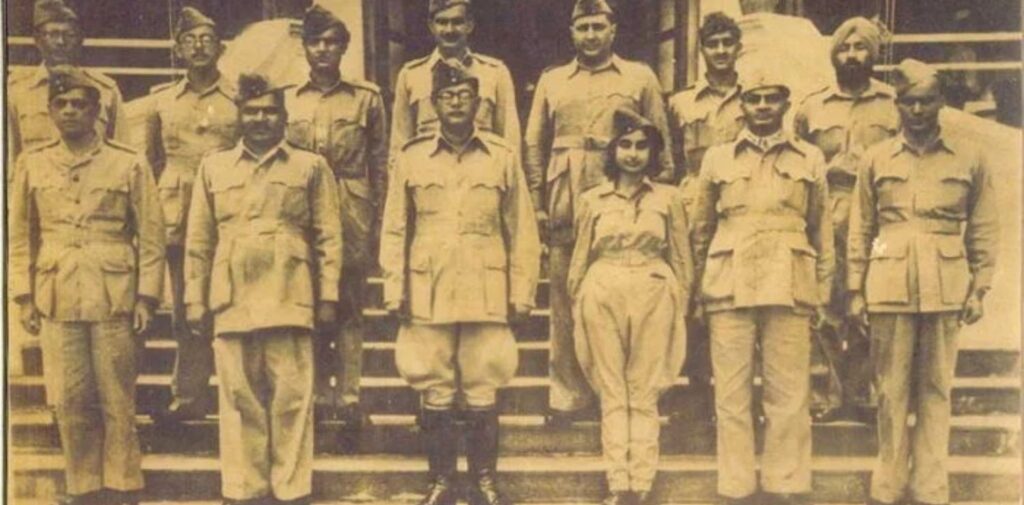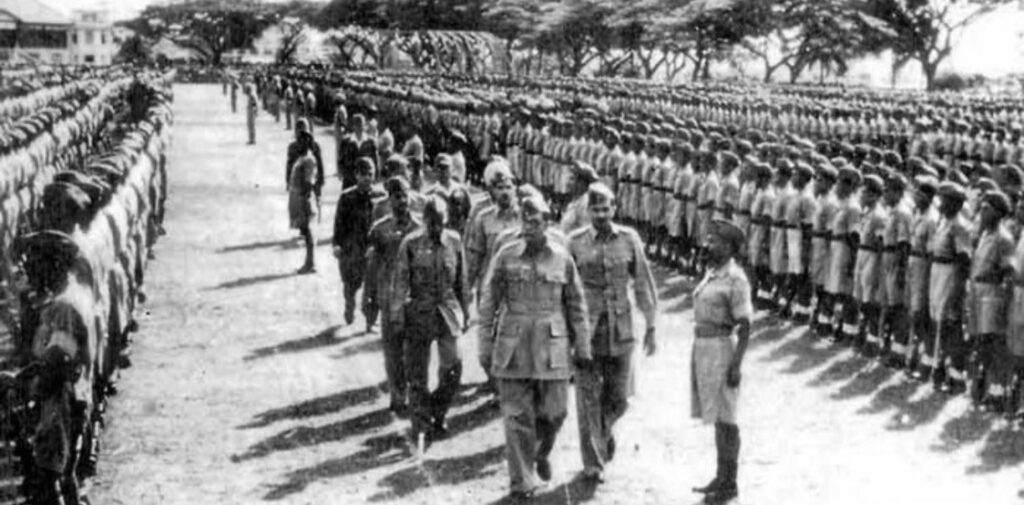The Indian National Army (INA) was a major force in India’s struggle for independence. Led by the brave and visionary Subhas Chandra Bose, the INA made important contributions to the movement that eventually led to the end of British rule in India in 1947. While many people know about the role of leaders like Mahatma Gandhi, Jawaharlal Nehru, and Sardar Patel in India’s freedom struggle, the contributions of the INA and Subhas Chandra Bose are often less talked about.
In this article, we will take a simple and easy-to-understand look at the role of the Indian National Army in the Indian Independence Movement.
What Was the Indian National Army (INA)?
The Indian National Army, or INA, was an army formed during World War II, but its purpose was to fight for India’s independence from British rule. It was not an army formed within India itself, but rather in foreign lands where many Indian soldiers and workers had been living or were captured during the war. Subhas Chandra Bose, one of India’s greatest freedom fighters, led this army.
The INA was first formed in 1942 in Southeast Asia, where many Indians were living under Japanese occupation during World War II. Bose, who believed in using force and struggle to achieve freedom for India, convinced the Japanese to support the creation of this army.

Why Was the INA Important?
The Indian National Army was important because it challenged British rule in a very direct way. While many freedom fighters like Gandhi followed the path of non-violence, Subhas Chandra Bose believed that violence was necessary to break free from British colonial control. The INA was one of the first armies formed to fight the British in this manner. It inspired many Indians, especially soldiers in the British army and people in India, to think about freedom in a new way.
The INA became a symbol of courage and determination. It showed that the Indian people were ready to fight for their rights, even if it meant going to war.
The Role of Subhas Chandra Bose in the INA
Subhas Chandra Bose, often called “Netaji,” was the leader who inspired and led the INA. Before leading the INA, Bose was a well-known leader in India’s independence movement. He was a powerful speaker and a leader who believed that India could never be truly free unless it fought for its freedom.
In 1941, Bose took a bold step and escaped from house arrest in India. He made his way to Germany and later to Japan, where he sought help for India’s freedom struggle. He believed that the British could only be defeated with the help of other countries, and he looked for support from nations that were also fighting against Britain during World War II.
With the help of Japan, Bose formed the INA to fight the British. He gave a call for “Give me blood, and I shall give you freedom!” This call inspired many young men and women to join the INA and fight for India’s independence.

How Did the INA Fight Against the British?
The INA fought bravely in battles during World War II. They joined the Japanese army and fought in Burma (now Myanmar) and other areas in Southeast Asia. The soldiers of the INA were determined to free India from British rule, and they fought hard to achieve this goal.
One of the most famous battles fought by the INA was the Battle of Imphal in 1944. This battle took place in Northeast India, and the INA joined forces with the Japanese army to try to invade British-controlled India. While the battle did not end in victory for the INA, it showed the British that India’s freedom fighters were ready to take on any challenge.
Even though the INA did not win any major battles in the field, its role was not just in fighting on the battlefield. It was also about inspiring the Indian people to realize that their independence could be won through struggle, sacrifice, and determination.
The Role of Women in the INA
An important and unique aspect of the INA was the involvement of women in its ranks. Subhas Chandra Bose encouraged women to join the army and fight for their country. He set up the Rani of Jhansi Regiment, which was a special women’s division in the INA. Women soldiers were trained in various military tasks, including medical care, weapons handling, and even fighting in battle.
The women in the INA were brave and showed that India’s struggle for independence was not only a battle for men but also for women. This gave a new sense of empowerment to Indian women and helped in shaping the future of women’s rights in India.
The INA’s Impact on Indian Independence
Although the INA did not succeed in defeating the British in battle, it played a crucial role in changing the course of India’s independence struggle. Here’s how the INA made a difference:
- Awakening the Spirit of Nationalism: The INA’s bravery and sacrifices inspired many Indians to join the freedom struggle. It helped stir up a sense of nationalism, and many people saw the INA’s fight as a sign that India could win its freedom if it kept pushing for independence.
- British Weakness: The British realized that India’s fight for freedom was no longer just a few protests or campaigns. The INA showed that India was ready to take up arms to end British rule, and this worried the British government.
- Support for Quit India Movement: The INA was not directly part of the Quit India Movement (launched by Gandhi in 1942), but both movements were happening at the same time. While Gandhi’s movement called for peaceful resistance and non-cooperation, the INA’s actions showed that Indians were willing to fight if necessary. Together, these two movements increased pressure on the British.
- Aftermath of INA Trials: After the war, many INA soldiers were arrested by the British and put on trial. The British tried to punish these soldiers, but their trials sparked widespread protests across India. People from all walks of life, including students, workers, and politicians, came out in support of the INA soldiers. This created a wave of support for the freedom struggle, which helped speed up the end of British rule.

The Legacy of the INA
Even though the INA was defeated in battle and the British did not give up power immediately, the army left a lasting legacy. Subhas Chandra Bose and the INA played a major role in inspiring the freedom movement and pushing the British out of India. Bose’s leadership and vision continue to be celebrated today, and his famous call for “Give me blood, and I shall give you freedom!” remains an iconic slogan in the history of India’s independence.
The INA’s efforts showed that the British could no longer rule India in the same way, and this helped the Indian independence movement gain strength. The INA soldiers may not have won their battles, but they made sure that India’s independence was a cause worth fighting for.
Conclusion – Contribution of the Indian National Army
The Indian National Army was a brave and important part of India’s fight for freedom. Led by the visionary Subhas Chandra Bose, the INA showed the British that Indians were ready to take up arms for their independence. The INA’s role in the Indian independence movement is remembered for its courage, sacrifice, and determination.
Though the INA did not win its military battles, its contribution to India’s freedom struggle is priceless. The efforts of the INA helped unite Indians in the quest for independence and gave the final push that led to the end of British colonial rule in 1947.
Today, the story of the INA and Subhas Chandra Bose serves as an inspiration to millions of Indians, reminding us of the power of unity and the determination to fight for what is right.




